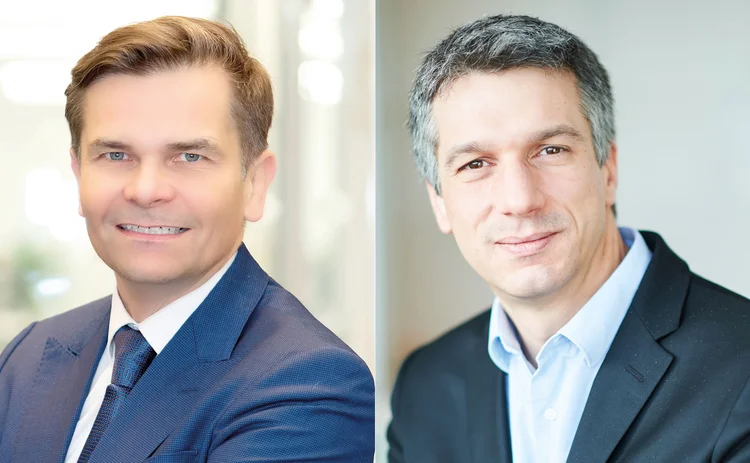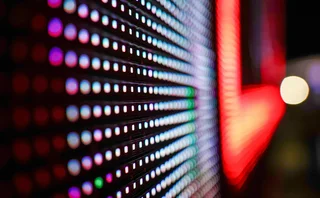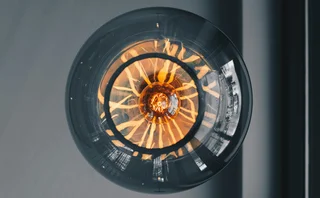Natural gas/LNG house of the year: ENGIE
Energy Risk Awards 2025: Energy firm signs a string of innovative deals in established and fledgling gas markets

Over the past year, geopolitical conflict and supply-chain disruptions have continued to create volatility in natural gas markets which were also impacted by inflationary pressures and interest rate movements. However, Europe’s dependence on liquified natural gas (LNG) and intermittent renewable energy generation is only set to continue as the energy transition gathers steam. This will strengthen demand for stable energy supplies – and organisations that can provide them.
“Securing reliable and competitive supply for clients remains a priority,” says Sébastien Delannoy, managing director, gas assets and developments Europe, ENGIE Global Business Unit (GBU) Supply & Energy Management. “And this requires agile procurement strategies.”
Over the past 12 months, ENGIE, the 2025 winner of Energy Risk’s Natural gas/LNG house of the year award, carried out some unique and innovative flexible procurement transactions. In one example, in Europe, it set up a structured virtual regasification deal for a leading trading player, which will be operational during 2025 and 2026. The transaction is structured as LNG put options, leveraging ENGIE’s large EU regasification capacities.
“This is a key transaction for trading counterparts [that do not have] primary capacity,” says Ralf Dickgreber, head of global LNG & biomass at ENGIE GBU Supply & Energy Management.
In addition to market participants with no physical access to LNG regasification capacity, those that prefer not to manage physical downstream gas send-outs after regasification could also benefit. Clients get the benefits of secure market access and the flexibility to choose not to deliver the LNG. ENGIE takes on the complexity and risks associated with regasification contracting, such as the need to make long-term commitments and employ specialist downstream teams.
Amid what Delannoy calls a “fiercely competitive” European gas landscape, ENGIE used its long-standing relationships and market expertise to secure around 170 terawatt hours (TWh) of gas for its Western European supply portfolio in 2024.
In parallel, to deliver on its environmental social and governance (ESG) agenda, ENGIE continued to work with US LNG suppliers on long-term gas supply schemes facilitating connectivity with US gas suppliers. “These partnerships will enable us to source certified gas, paving the way for increased use of responsibly sourced and low-carbon gas to decarbonise our LNG supply chain,” says Guillaume Servajean, chief commercial officer, global LNG at ENGIE GBU Supply & Energy Management.
For Eastern European countries that have been heavily affected by the Russian invasion of Ukraine, ENGIE also used its portfolio, market knowledge and transport and storage capacities to deliver much-needed volumes. When Moldova declared a state of emergency due to a stoppage in Russian gas supplies at the beginning of 2025, for example, ENGIE delivered around 1TWh of gas. This satisfied a quarter of Moldova’s needs (excluding the Transnistria region) during the first quarter, according to Delannoy.
ENGIE’s strong focus on decarbonisation – it aims to reach net zero by 2045 – continued to push it to develop capabilities in new markets in 2024, including renewable natural gas (biomethane), low-carbon ammonia and hydrogen gas (H2). The company grew its upstream biomethane portfolio last year with the acquisition of the 160 gigawatt-hour (GWh) Ixora plant in the UK, two Dutch plants with a combined annual capacity of 137GWh and a 68GWh Belgian plant.
ENGIE also used its offtake and cross-border expertise to import biomethane from Ukraine into the European Union. “Ukraine’s biomethane production could meet 60% of Europe’s needs at an attractive price, while such exports boost Ukraine’s economic recovery,” Delannoy says. He adds that ENGIE’s downstream biomethane deals totalled 21TWh in 2024, including contracts with BASF and other large industrials.
A first ammonia derivatives trade, completed in mid-2024, is another significant milestone for ENGIE, which aims to become a major market maker in this sector. “Ammonia is mainly used as an input into fertilisers and petrochemicals but is expected to become one of the preferred carriers for low carbon H2,” explains Saravanan Manivel, low-carbon fuels director at ENGIE GBU Supply & Energy Management. “To complement our low-carbon H2 portfolio, we are building a global low-carbon ammonia (blue and green) portfolio in Europe and Asia.”
This H2 business includes ENGIE’s H2BE project with Equinor in Belgium, which has been awarded a grant by the EU Innovation Fund. The project aims to convert 11TWh/year of natural gas into 8TWh/year of low-carbon hydrogen, which could be supplied to industries including steel. Delannoy says discussions are currently under way with steelmakers in northwest Europe for supply contracts that would start by 2030.
While it continues to help clients navigate the increasingly unpredictable natural gas markets, ENGIE is clearly also looking ahead to position itself as a key market participant in a rapidly decarbonising global energy sector.
More on Awards
Environmental products house of the year: ENGIE
Energy giant signs raft of forward-thinking environmental deals in Apac
Newcomer of the year: Marex
Commodities and financial services firm expands rapidly across Apac region, entering multiple new markets
Voluntary carbon markets house of the year: Marex
Marex’s support of mangrove projects provides high-quality credits for clients and socio-economic benefits for local communities
OTC trading platform of the year: Marex
Marex’s Agile platform registers impressive volume and client growth in Asia
Technology advisory firm of the year: KWA Analytics
With a focus on strategy and scalability, KWA Analytics improves clients’ operations in Japanese power, biofuels and certificates
Commodities technology house of the year: Topaz Technology
Strong revenue growth, Asia focus and a unique approach to unifying physical and financial risk
Electricity house of the year: Provincial Electricity Authority (PEA)
Power company uses renewables to help Thailand attract energy-intensive manufacturers amid recent geopolitical shifts
Energy Risk Asia Awards 2025: the winners
Winning firms showcase the value of prudent risk management amid challenging market conditions







